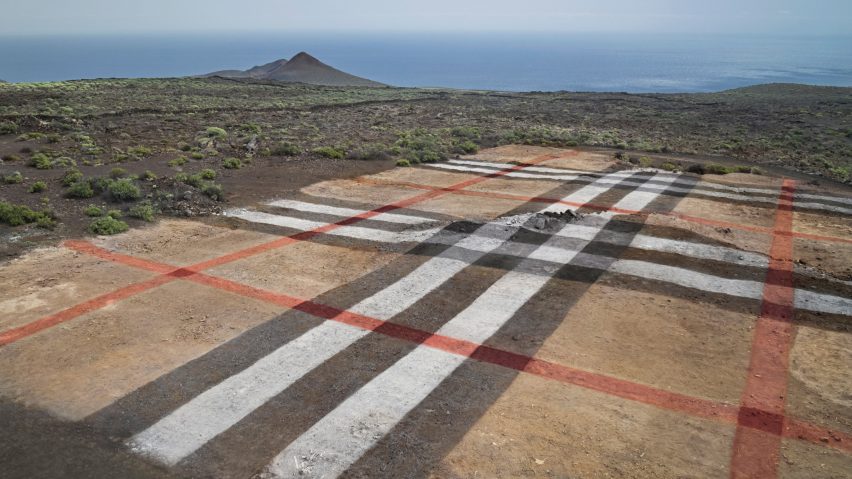
Burberry brands volcano and meadow with iconic check pattern
British fashion house Burberry used milk-based paints and flowers to create a pair of temporary installations in the Canary Islands and South Africa, which mimic the brand's signature check pattern when seen from above.
The project was designed as part of the Burberry Landscapes series, which sees creatives collaborate with the brand to produce temporary site-specific land art.
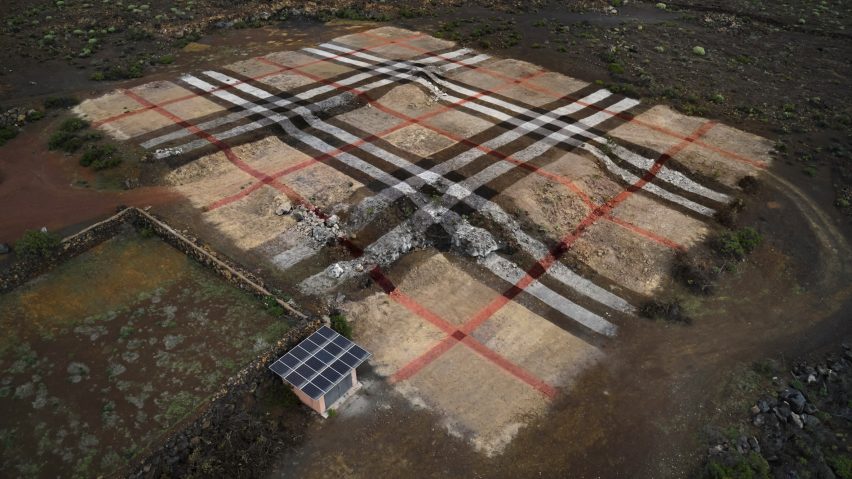
One installation was designed in the Canary Islands, where it remained for one week last November before it was swept away.
Cuban-American artist Jorge Rodriguez-Gerada used natural milk-based paints to create a 4,500-square-metre version of Burberry's recognisable check pattern across a volcanic site on the island of El Hierro – the first self-sufficient island in the world to use wind as its main source of energy, according to the brand.
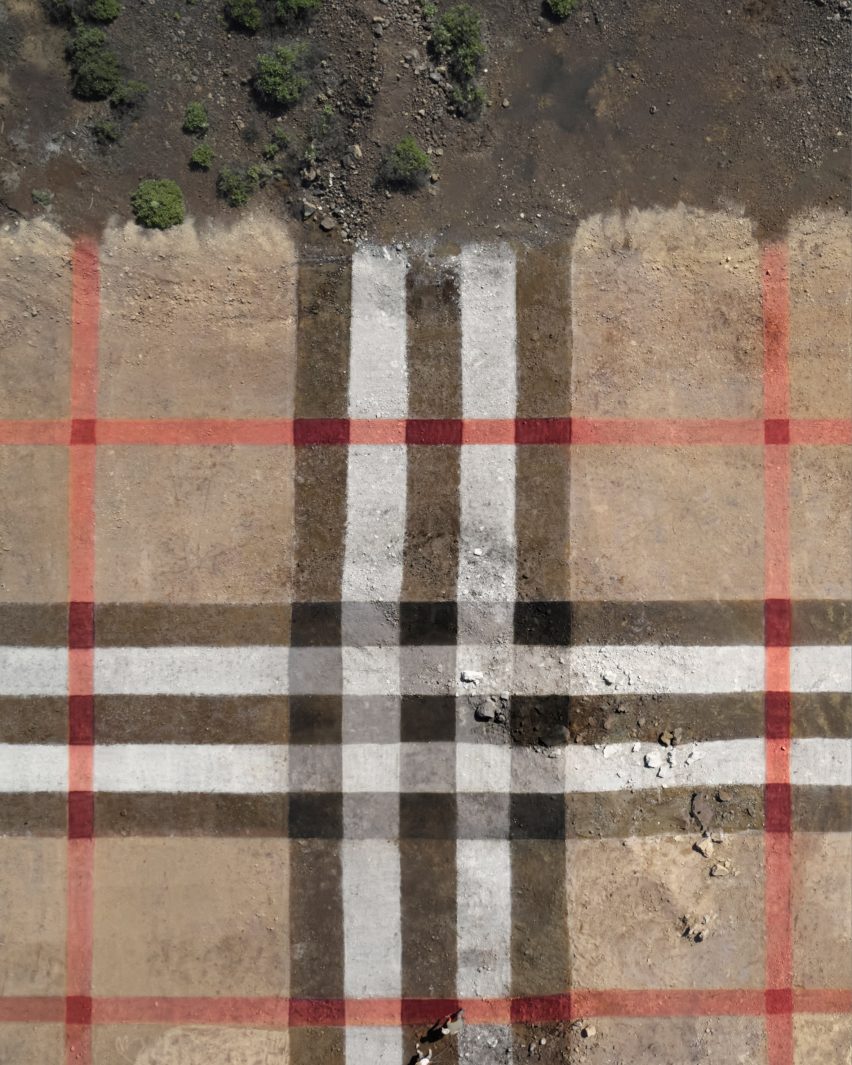
"One of the things I enjoy about this painting process is that it's created from minerals," said Rodriguez-Gerada.
"So, as you're mixing your colours, it’s like alchemy."
When seen from an aerial perspective, the distinctive geometric strips of beige, red, black and white were draped across the undulating landscape and mimicked the fashion house's cashmere check scarf, which is one of Burberry's best-known accessories introduced in the 1970s.
The temporary illustration was removed from the site by wind, as well as the use of manual turning and local water sources in an attempt to leave no traces behind.
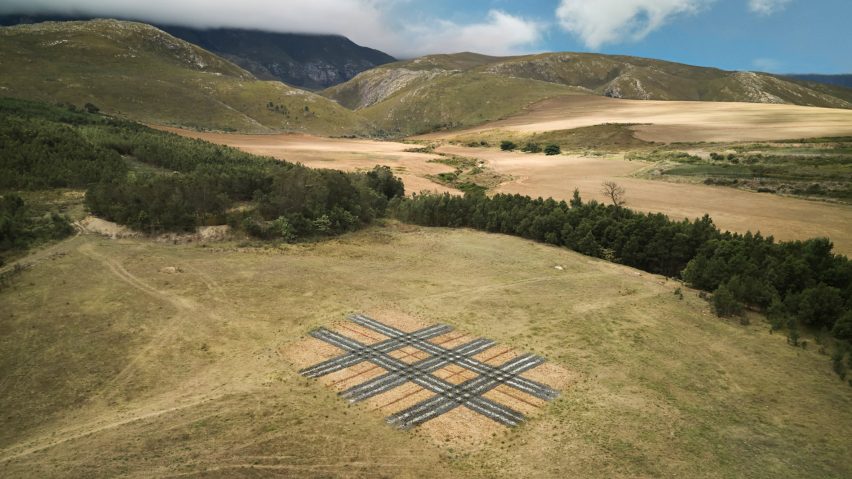
A meadow in Overberg, which is a region to the east of Cape Town in South Africa, formed the setting for the second installation.
Early last December, Burberry commissioned local experts to hand-plant flowers across the meadow in a similar shape to Rodriguez-Gerada's project. The installation measured 1,064 square metres.
Native African daisies and honey-scented helichrysum petiolare were chosen to echo the Burberry colours and attracted birds and insects while the installation was intact.
Water sourced from a rainfall catchment dam nurtured the plants before they were overturned to break down and compost back into the earth within a week.
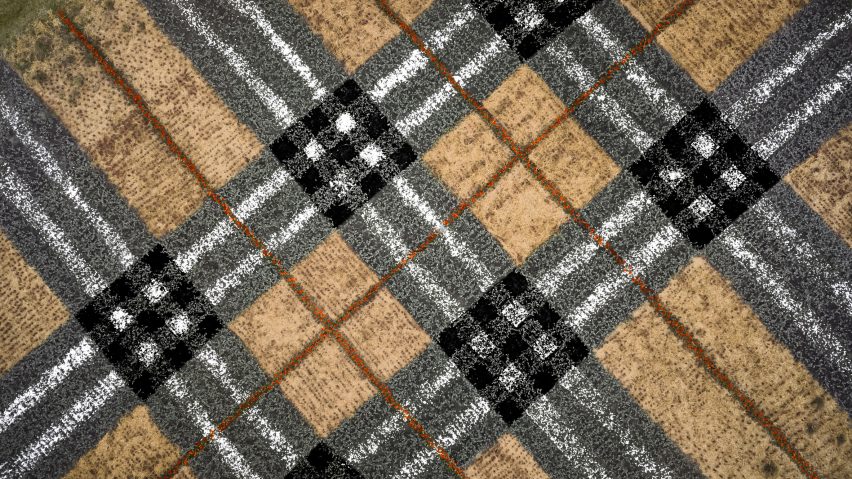
The fashion house chose El Hierro as a nod to Elsie Burberry, who was the daughter-in-law of the brand's founder Thomas Burberry. Elsie travelled to the Canary Islands in the early 20th century where she formed a connection to the region's landscapes.
Western Cape was selected as a reference to the late aviators Betty Kirby-Green and Arthur Clouston, who co-piloted a Burberry plane from London to Cape Town in 1937 and landed it close to the meadow in Overberg.
"[Burberry Landscapes intends to] complement global landscapes in original ways through natural materials, whilst demonstrating a continued commitment to pursuing sustainable practices," said the brand.
"Together, these landscapes embody Burberry's belief that creativity opens spaces," it added.
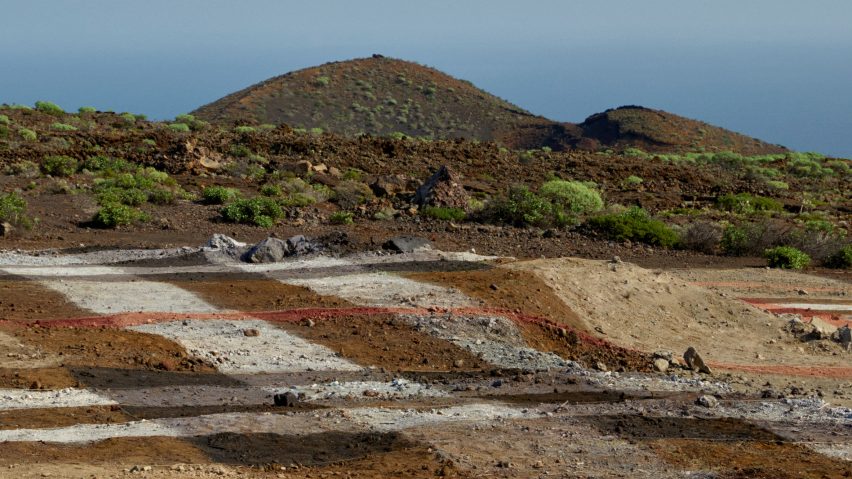
Previous iterations of Burberry Landscapes have included the use of sand sculptures, drone shows and hot air balloons, and have featured in locations such as above a Colorado reservoir.
The iconic Burberry check motif was first used as an accessory in its own right in 1967 when Paris-based buyer Jacqueline Dillemman removed the check lining from a coat and reimagined it as luggage wrap and an umbrella cover.
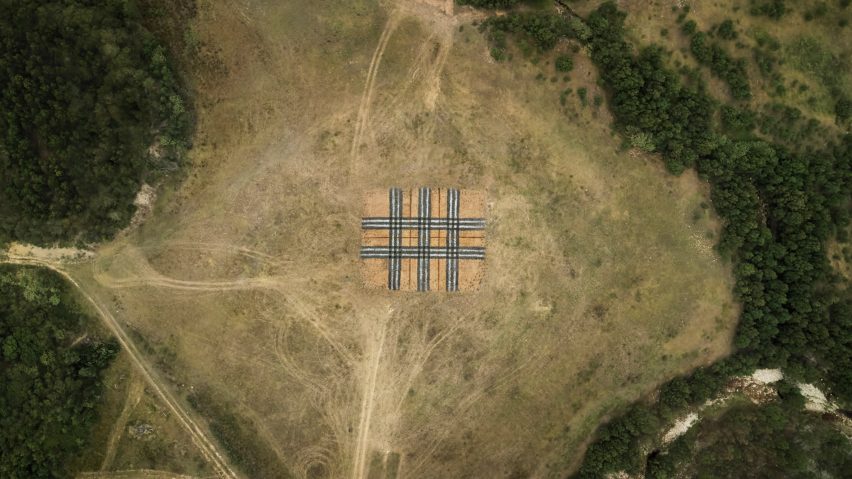
Established in 1856, Burberry created a mirrored pop-up store on South Korea's Jeju Island to reflect its mountainous surroundings while the brand also designed virtual clothing for the video game Minecraft.
The images are courtesy of Burberry.